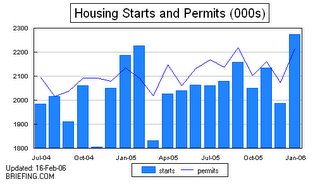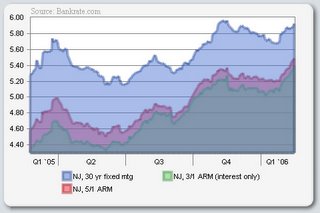Welcome to another edition of Price Reduced!
For all the newcomers to this blog, Price Reduced! takes a look at a handful of significant price reductions across Northern NJ. The purpose of this exercise is to serve as proof that the Northern New Jersey real estate market has long since been overvalued and has started the long hard decline back to the mean.
These listings are in no way an endorsement by myself, nor do I believe they are a bargain or a value. Even reduced, I still believe these homes are still grossly overpriced.
With that, the listings please!
MLS# 2231371 - Hamburg, NJ
Previous Price $488,900
Current Price $388,900 (Price Reduced 20.5%)
MLS# 2219478 - Newark, NJ
Previous Price $224,900
Current Price $185,000 (Price Reduced 17.7%)
MLS# 2206673 - West Milford, NJ
Previous Price $1,190,000
Current Price $995,000 (Price Reduced 16.4%)
MLS# 2216603 - Kinnelon, NJ
Previous Price $797,000
Current Price $670,000 (Price Reduced 15.9%)
MLS# 2232513 - Bloomfield, NJ
Previous Price $587,500
Current Price $499,000 (Price Reduced 15.1%)
MLS# 2233936 - Montclair, NJ
Previous Price $1,695,000
Current Price $1,450,000 (Price Reduced 14.5%)
MLS# 2240103 - Scotch Plains, NJ
Previous Price $599,900
Current Price $515,000 (Price Reduced 14.2%)
MLS# 2222745 - Newton, NJ
Previous Price $389,900
Current Price $334,900 (Price Reduced 14.1%)
MLS# 2202084 - Montville, NJ
Previous Price $1,525,000 (Increased from OLP of $1,349,000)
Current Price $1,315,000 (Price Reduced 13.8%)
MLS# 2103593 - Mount Olive, NJ
Previous Price $289,900 (Reduced from $320,000)
Current Price $250,000 (Price Reduced 13.8%, 21.8% off OLP)
MLS# 2232784 - Elizabeth, NJ
Previous Price $220,000
Current Price $189,900 (Price Reduced 13.7%)
MLS# 2065407 - Millburn, NJ
Previous Price $2,895,000 (Reduced from $2,995,000)
Current Price $2,499,000 (Price Reduced $13.7%)
MLS# 2206230 - Union, NJ
Previous Price $299,999
Current Price $260,000 (Price Reduced 13.3%)
MLS# 2210539 - West Milford, NJ
Previous Price $1,150,000 (Reduced from $1,200,000)
Current Price $999,900 (Price Reduced 13.1%, 16.7% off OLP)
MLS# 2207980 - Somerville, NJ
Previous Price $789,000
Current Price $692,000 (Price Reduced 12.3%)
MLS# 2205109 - Hanover, NJ
Previous Price $569,900 (Reduced from $585,000)
Current Price $499,900 (Price Reduced 12.3%, 14.5% off OLP)
MLS# 2224108 - Parsippany, NJ
Previous Price $495,000
Current Price $435,000 (Price Reduced 12.1%)
MLS# 2204401 - Old Tappan, NJ
Previous Price $1,350,000
Current Price $1,195,000 (Price Reduced 11.5%)
MLS# 2226156 - Livingston, NJ
Previous Price $959,000 (Reduced from $1,059,000)
Current Price $849,000 (Price Reduced 11.5%, 19.8% off OLP)
Over the two week period covering 1/29 - 2/12, the prices on 1175 homes were reduced. The average reduction was 4% and the total dollar reduction was almost $26 million dollars.
Caveat Emptor!
Grim


